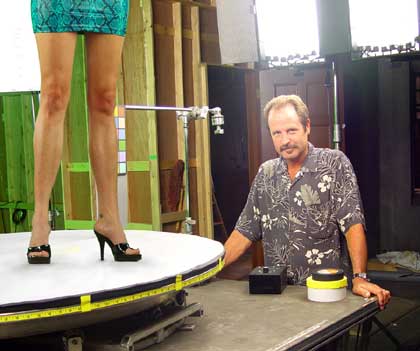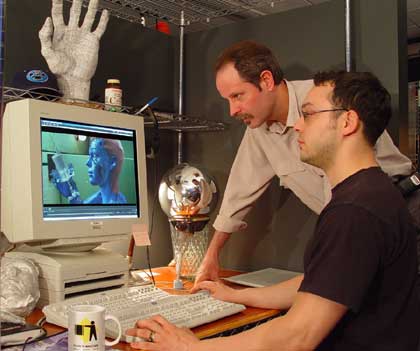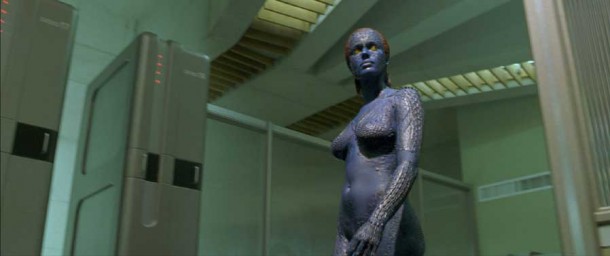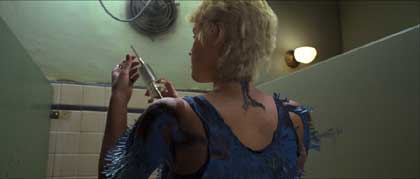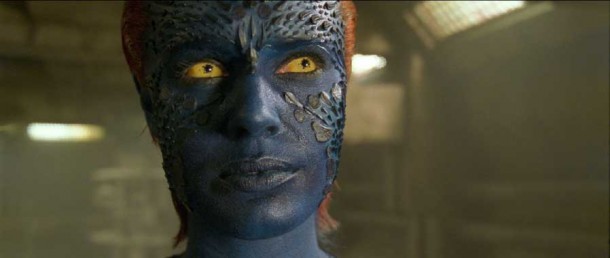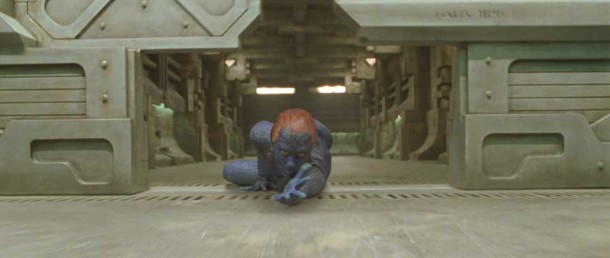Interview with Frank Vitz: Visual effects supervisor for the X2 team at KW
CGC: Could you begin by telling us about your own professional background?
FV: I have been working in visual effects and computer animation since the 1980’s. I got my start at Robert Abel and Associates in Hollywood. There I was a technical director on quite a few commercials including several Clio winners such as the TRW series. I also worked on the movie “Tron”. When Bill Kovacs left Abel’s to found Wavefront Technologies, he promoted me into his position as Head of R&D at Abel’s. I helped to spin off Abel Image Research where we created a very cool 3D software package that was an early competitor of Wavefront.
When Abel was dragged down and out by the Omnibus fiasco in 1987 I went to work as an independent computer graphics consultant and visual effects supervisor. I have worked on a lot of different projects including the design of a motion capture based sports performance analysis system, several interactive multimedia systems, commercials, and visual effects for motion pictures. My specialty is always finding creative solutions for difficult technical and aesthetic problems
I have done a lot of work with KWCC over the years including Judge Dredd, Stargate, the Spiderman attraction at Universal Studios, and more recently visual effects for the X-Men movies.
CGC: What were your role on the production of X2?
FV: I was visual effects supervisor for the X2 team at KW. The first movie was very successful and so Bryan Singer and Mike Fink brought back many of the same people who worked on the that film including KW and me. As I did for X1, I led the team that produced all of the Mystique transformation shots in the movie. I worked with Mike Fink to design the shots, and was on location in Vancouver for all the plate photography. During post production our team was based at MASS MOCA in the Berkshires where we created all the effects and composited them into the live action.
CGC: What was the most challenging aspect of the project?
FV: Well… I think the biggest challenge was to figure out how to improve the Mystique effects without losing continuity with the shots in the first movie. Bryan Singer wanted everything to be bigger and better and more realistic yet it had to be consistent with what we had already seen. The shots themselves were more challenging as well…. Mystique plays a much more important role in X2 and Bryan wanted to see her transformations up close… with the camera lingering longer in much tighter shots. We had to step up the level of detail in every aspect of the effects.
CGC: What was different between the original X-Men movie and this one for you?
FV: The shots are closer and more intimate. This forced us to
work with much more photo-realistic techniques. Luckily we had some more sophisticated tools at our disposal this time around. In a strange way though it was very much like the original movie… but we got a chance to work out some of the problems we had experienced and push the look of the transformation into a whole new realm. One advantage we had was that we were able to tap Daniel Roizman again. He completely re crafted the non linear morph tools that he had developed for us the first time around to work within the constraints of our new more highly detailed Mystique model. And he was able to vastly improve their real time interactivity at the same time. Pretty amazing stuff.
CGC: Were there any special challenges in integrating the digital character into the live plates?
FV: Yes. For one thing this time we made extensive use of live action projected textures. Kevin Noone and his group worked out a system that allowed us to rotoscope a character’s live action plate and extract his or her surface properties frame by frame. This allowed us to alter a performance and even a person’s proportions dynamically. This in turn allowed us to carry very convincing surface properties that were based on real live action footage right through to and integrated with a fully synthetic CG character. The results are most notable (by the fact that you don’t even realize that it is happening!) in the tent sequence when a series of very differently shaped women morph smoothly and erotically from one form to another complete while continuing to move in a convincing way.
We also made extensive use of High Dynamic Range Imagery or HDRI techniques on X2. While Paul Debevec has done amazing research in this area, it still fell to us to work out the practical details of how to implement it in our own production. The techniques we developed allowed us to reproduce in our CG elements the practical lighting of the original live action footage. Mike Fink and Bill Maher came up with a very cool system of shooting HDRI exposure ramps through an 8mm fisheye lens that gave us 360 degree coverage of every setup. We scanned this footage and combined the images into panoramic HDRI environment maps. These in turn were used as reflection maps and as a source from which we derived CG light rigs that approximated the original lighting. Our head Lighter Leo Quiles put all of this information to good use, creating lighting setups that were applied to all the elements in every scene…. and there were a LOT of them: main color passes, highlight passes, ambient occlusion passes, contact shadows, cast light shadows, scales, scale shadows, the meaty edge layer, etc… it seems almost ridiculous in retrospect, but by separating the renders into so many layers we were able to keep render times down and gain a lot of flexibility in our final composites.
CGC: Beyond Mystique’s transformation, what else have you contributed to the film?
FV: We worked only on Mystique but not only only on her transformations. WE also did a large number of Eye replacement shots. Rebecca Romijn-Stamos was unable to wear the full cornea contact lenses that would have been required to give her the characteristic Mystique Yellow Eyes so we gave them to her digitally. That process is a story unto itself! Talk about having to make an effect look real! AS humans we are trained from infancy to interpret every subtle nuance in the appearance of each others eyes. If the tiniest detail is wrong we spot it instantly. I had a team of eyeball experts led by Mary Nelson who were on the the case. We worked out a mainly 2D approach that preserved much of the clarity and detail in Rebecca’s real eyes while allowing us to shift them into that weird monochrome yellow color space. We also tracked a CG element of the Mystique blotchy pupil frame by frame into each eye.
We also did some wire and rig removal shots for Mystique’s action sequences… and even a digital floor reconstruction for when Mystique makes her escape from Stryker’s clutches by sliding out between the massive closing doors in his secret base.
Related Links:

